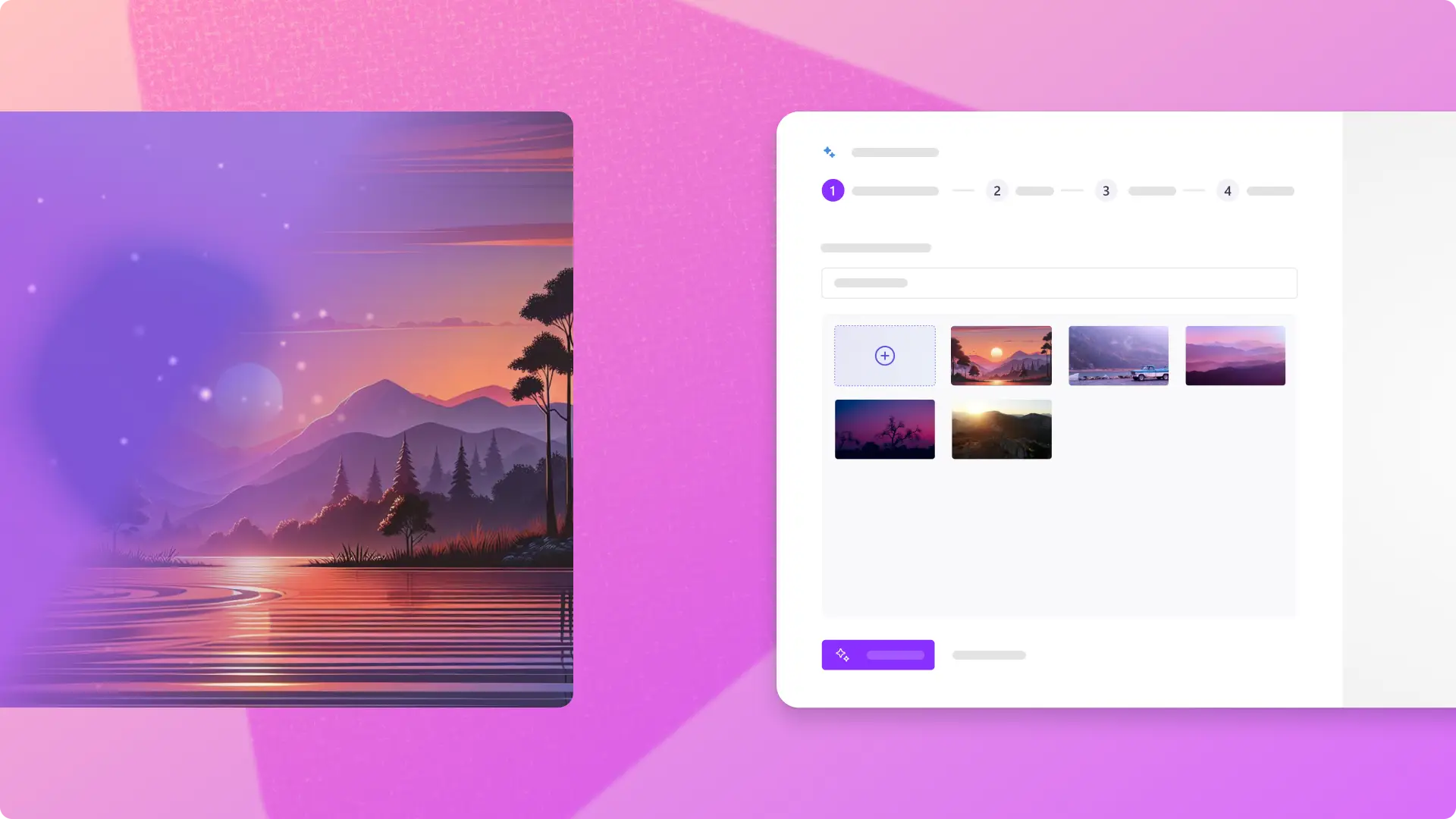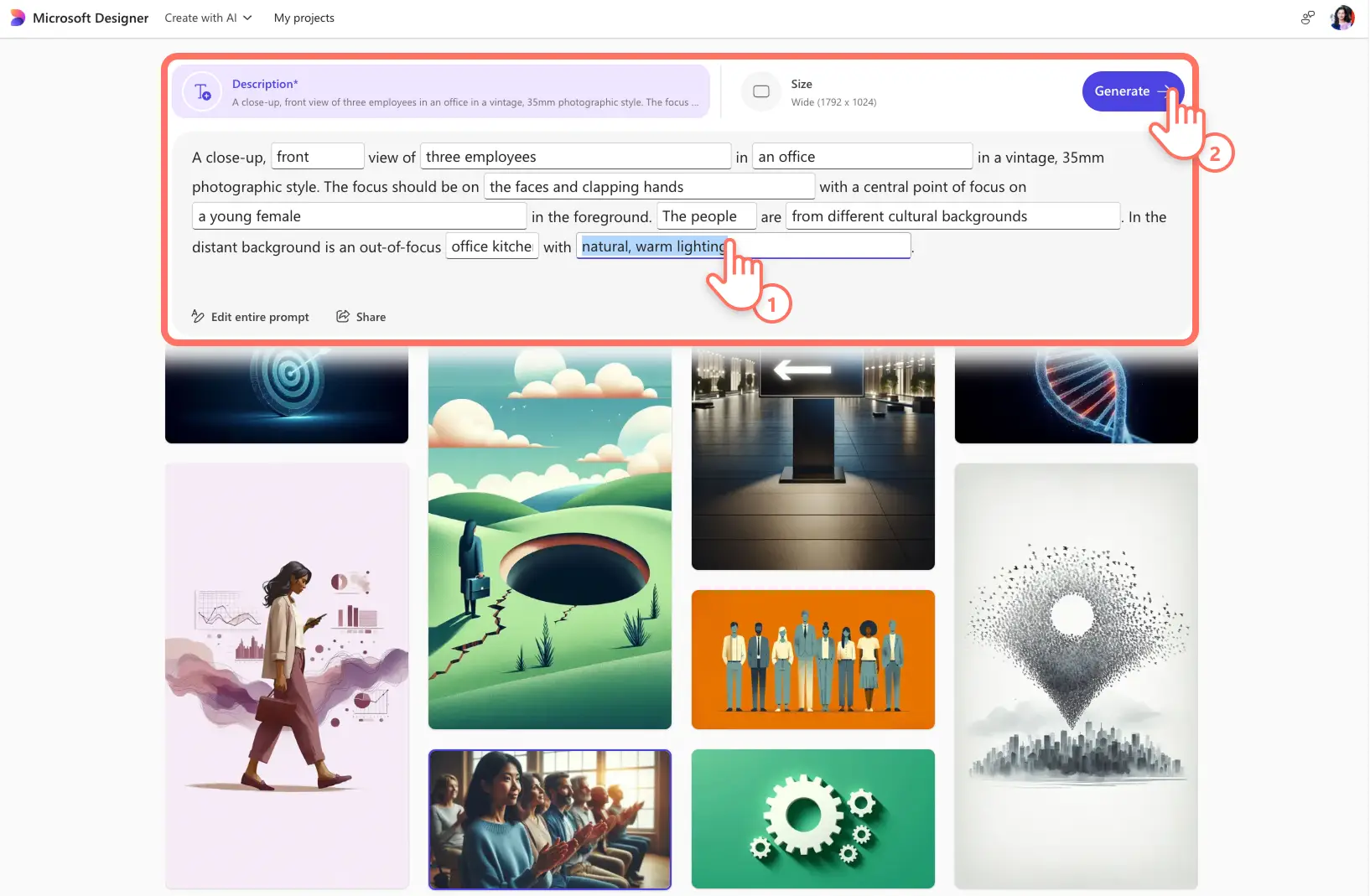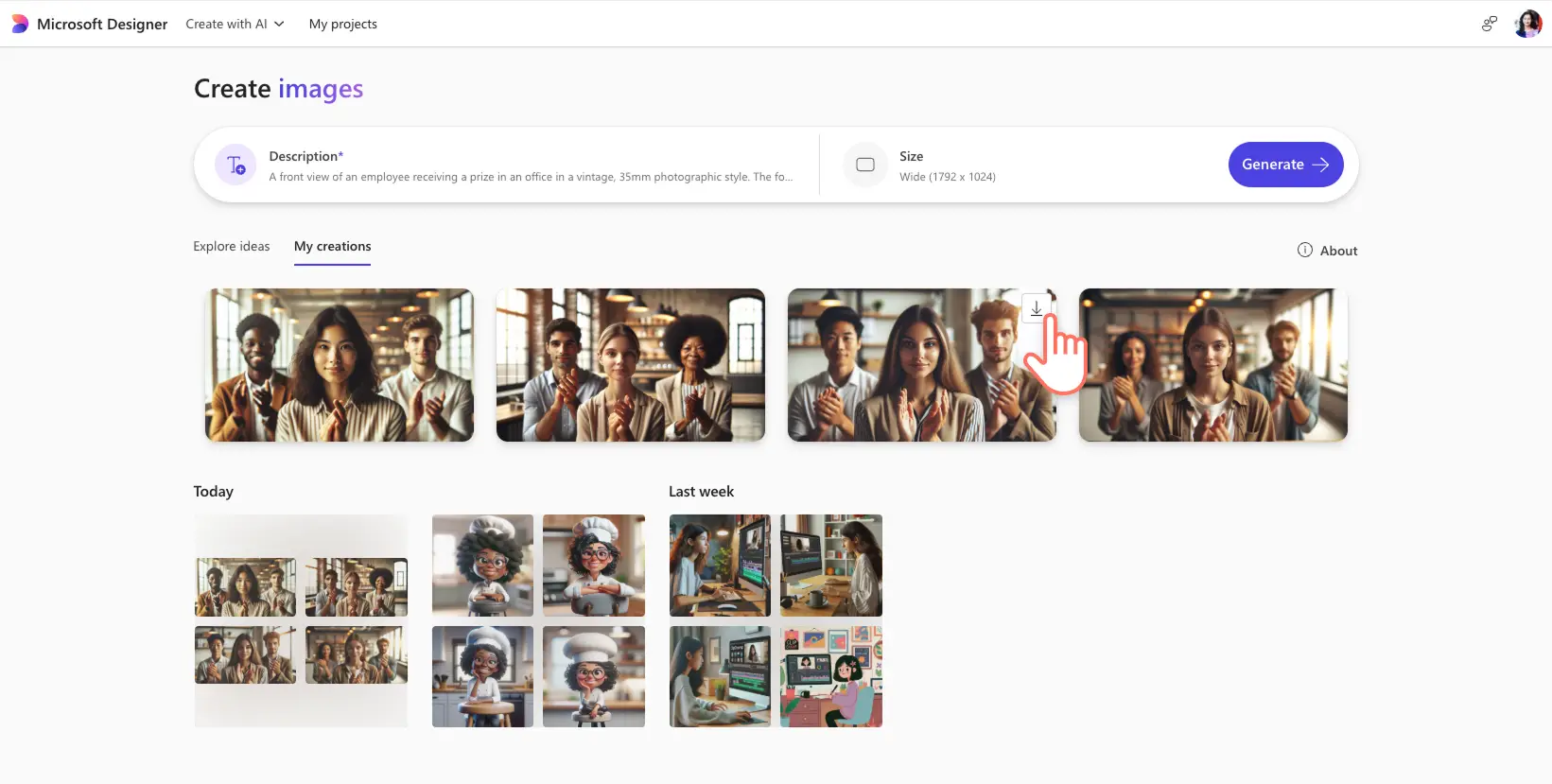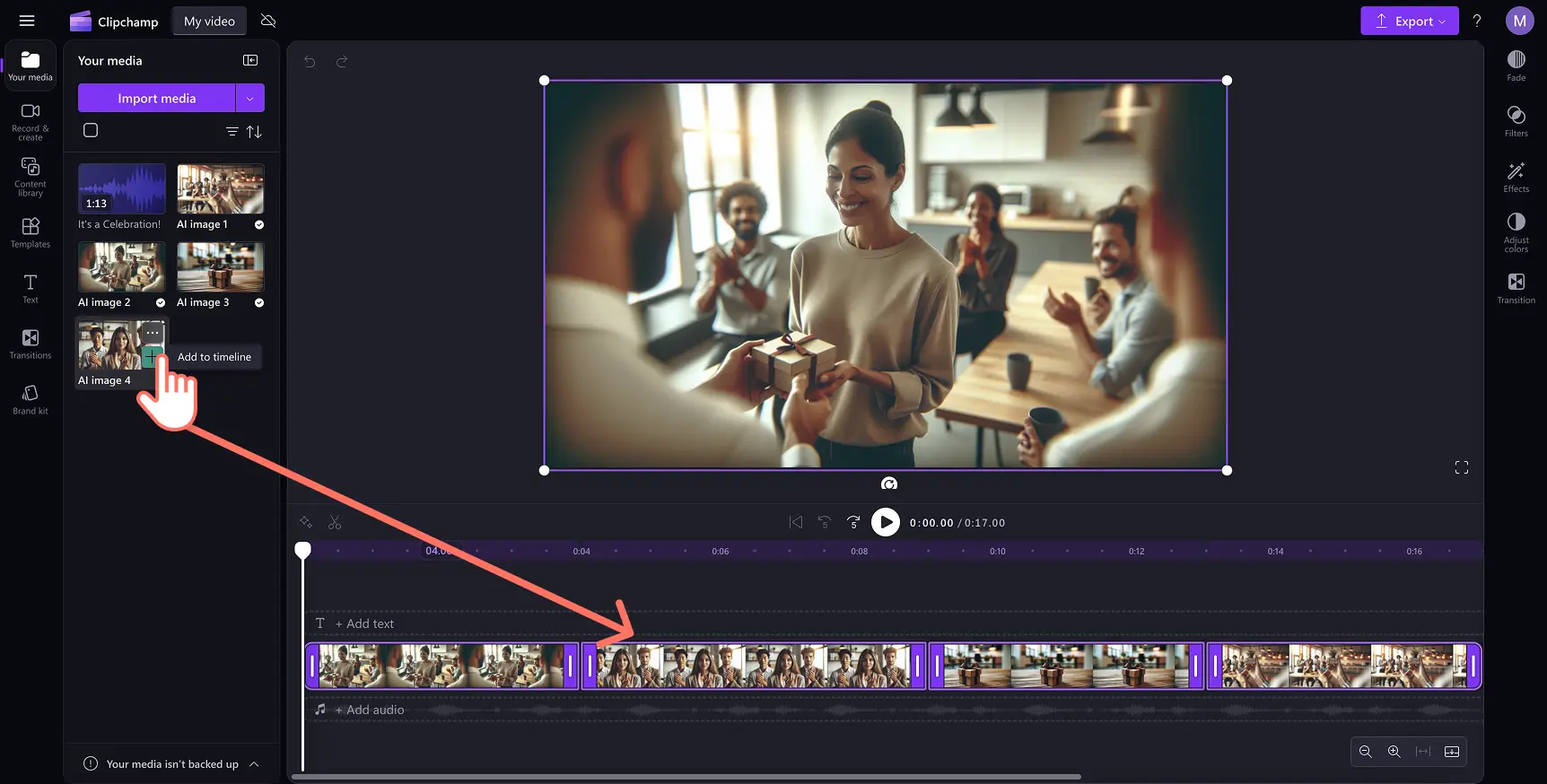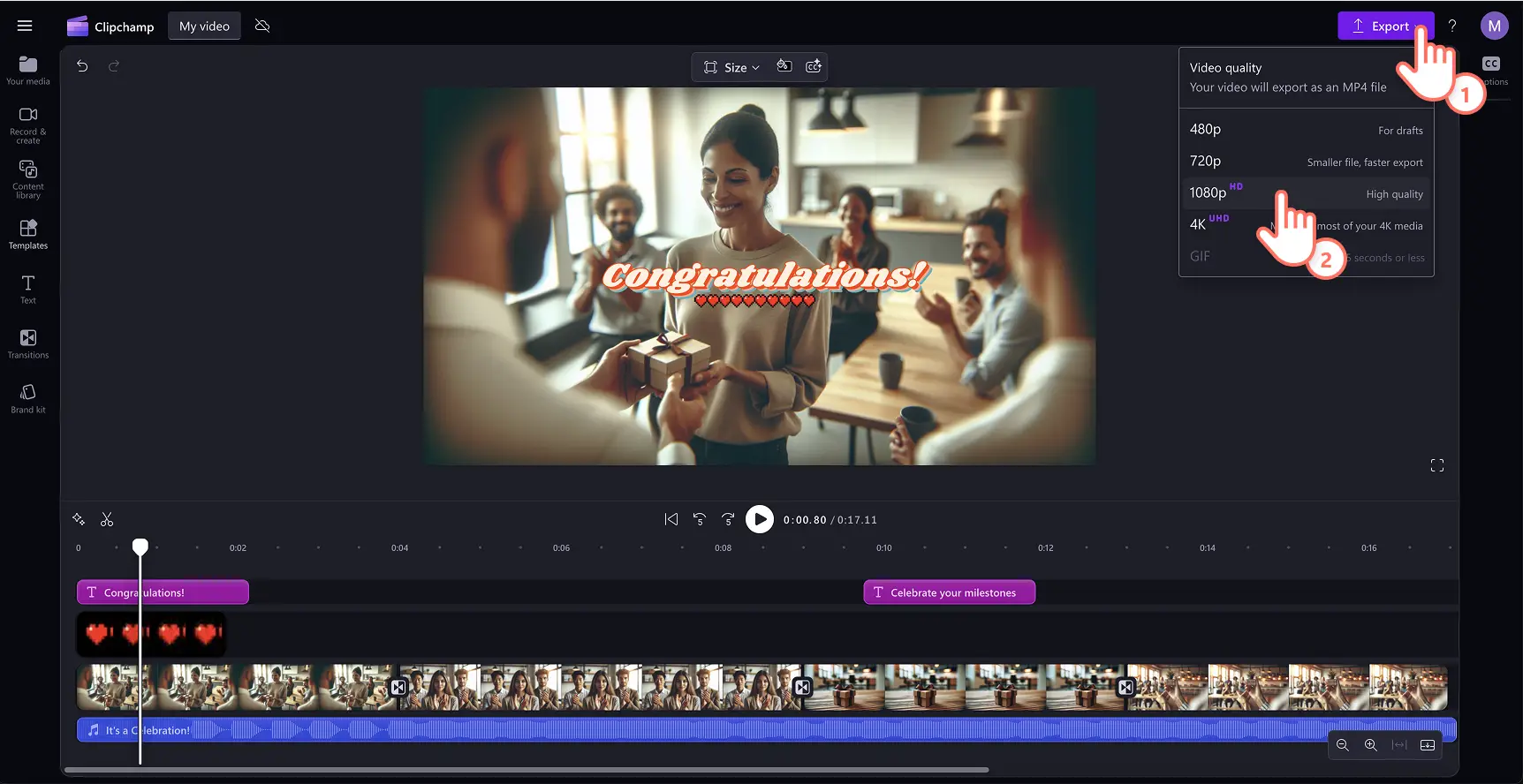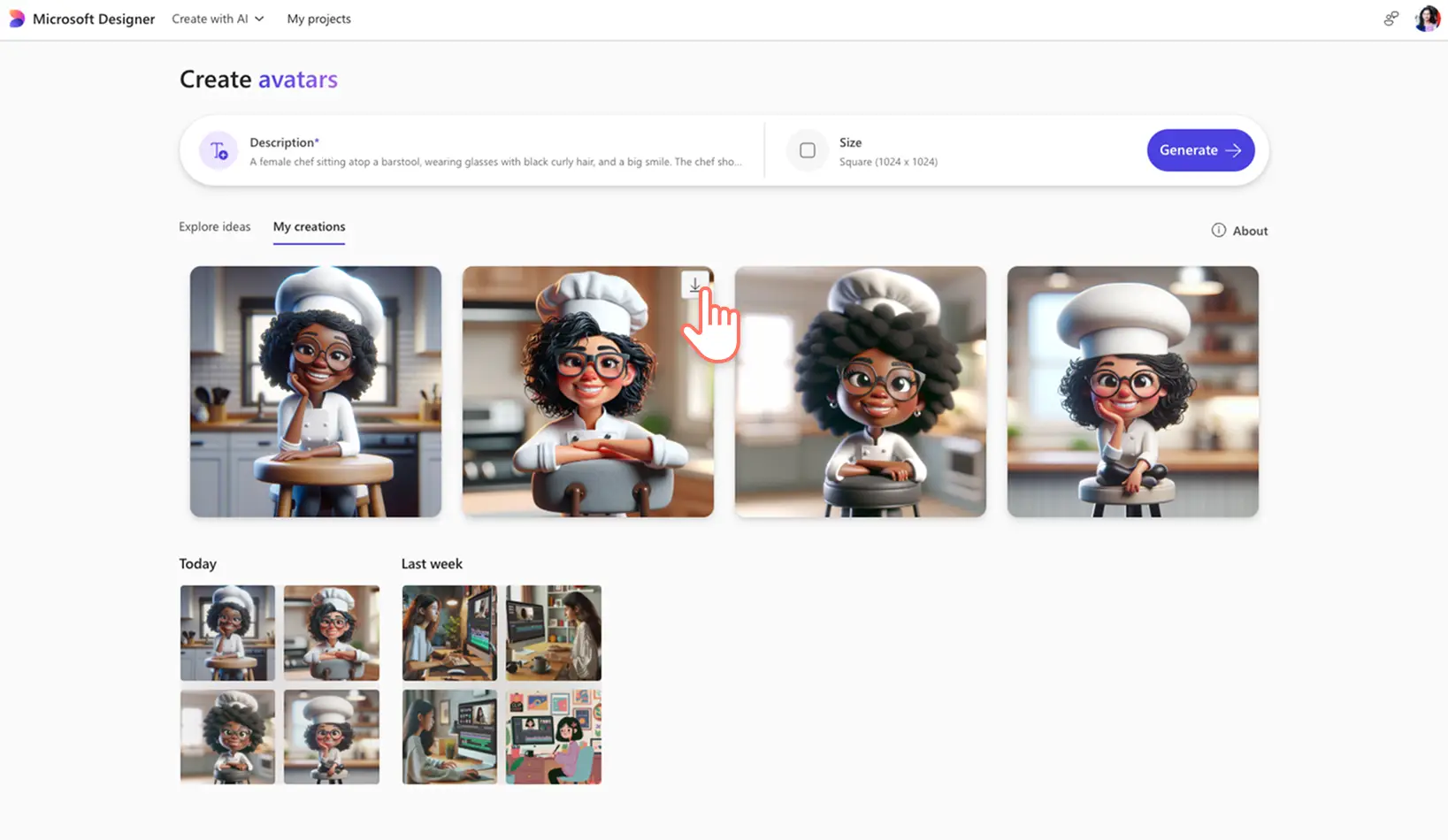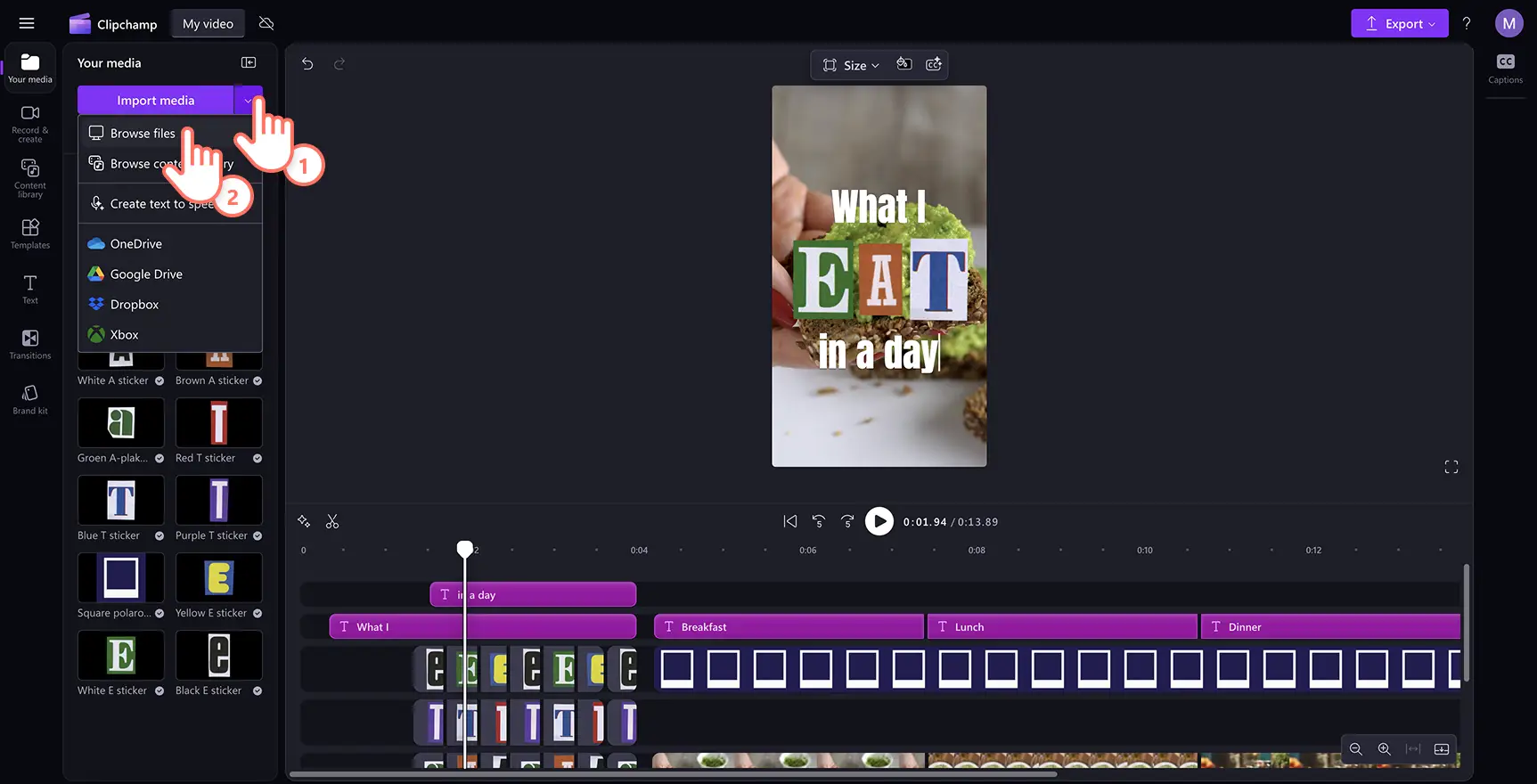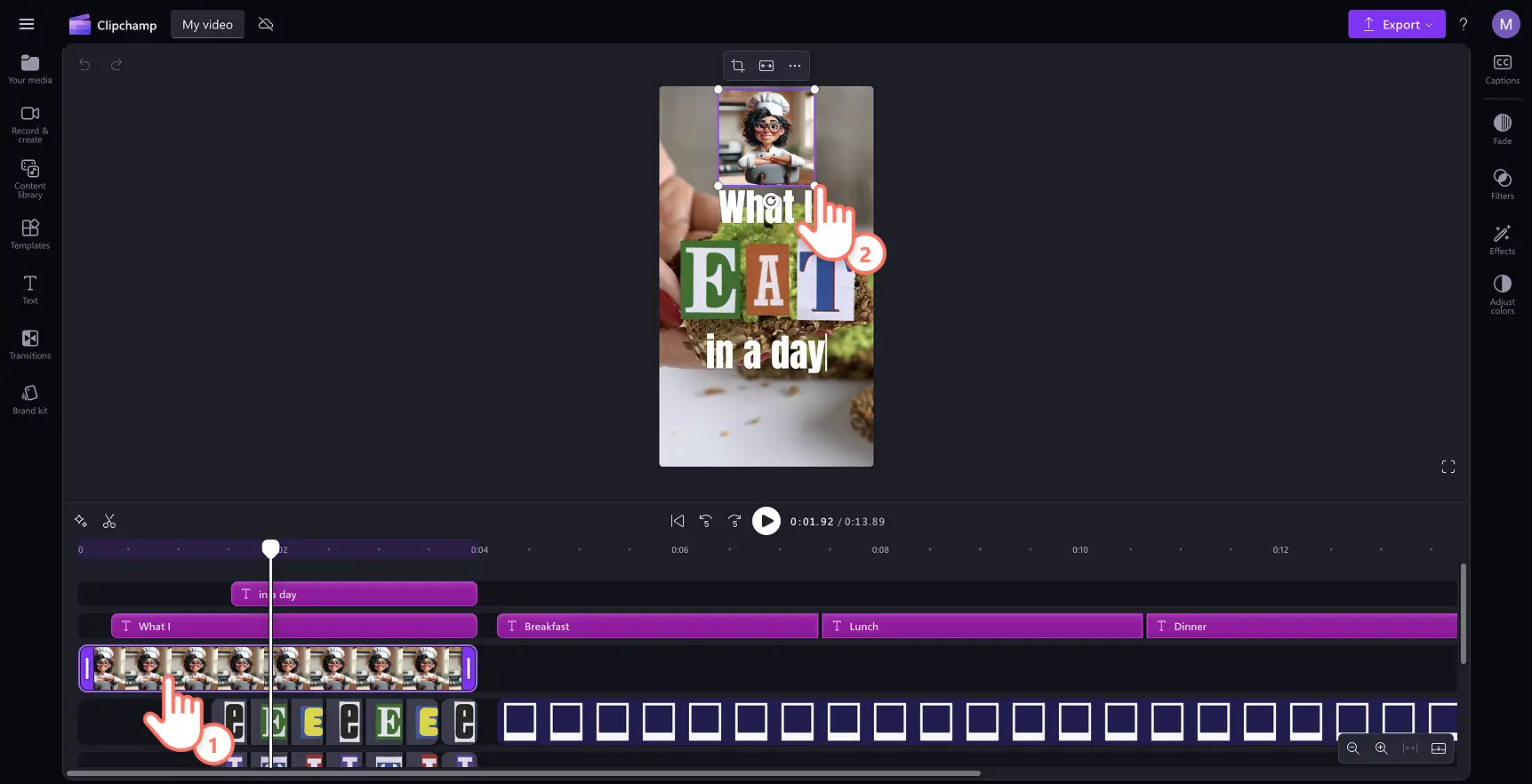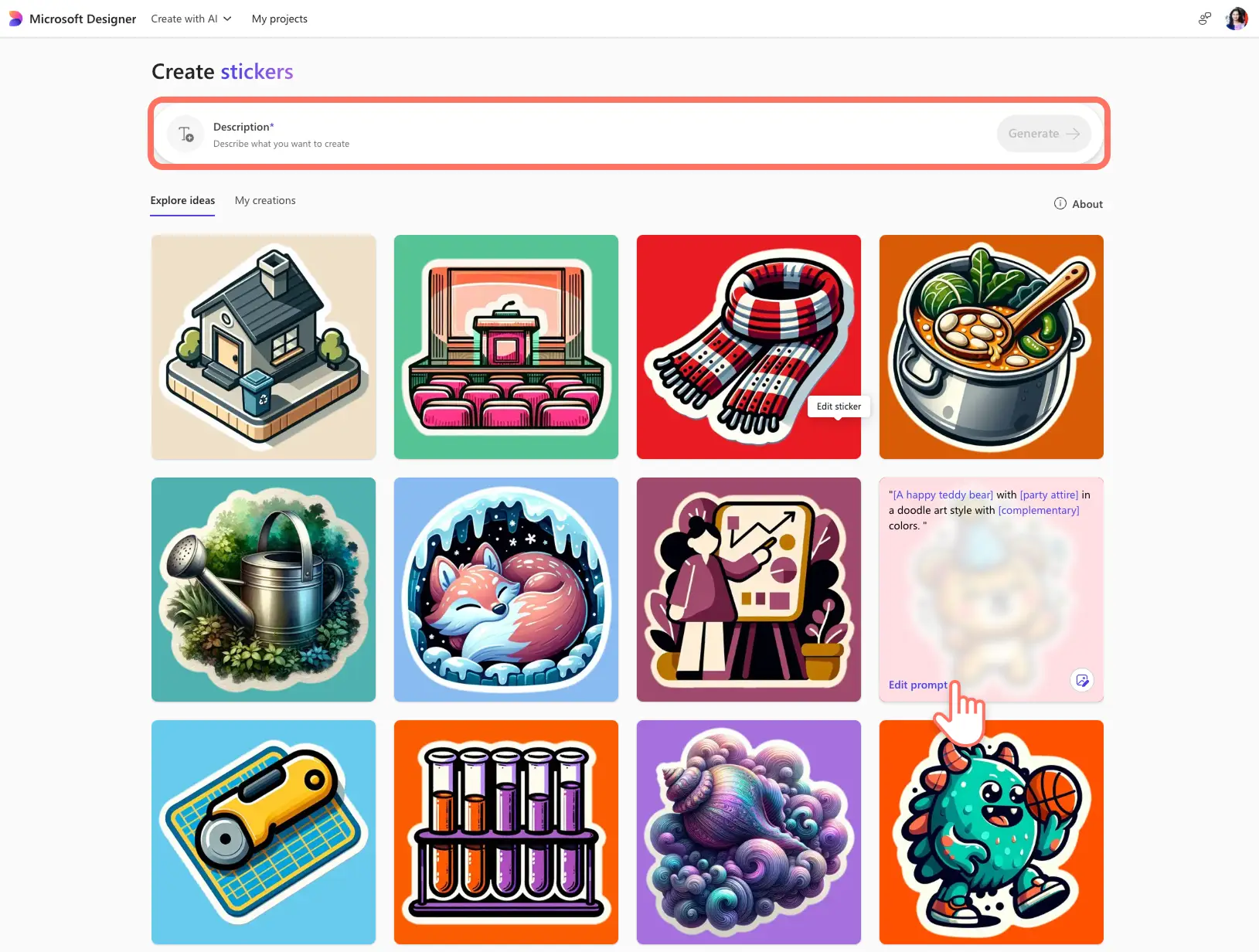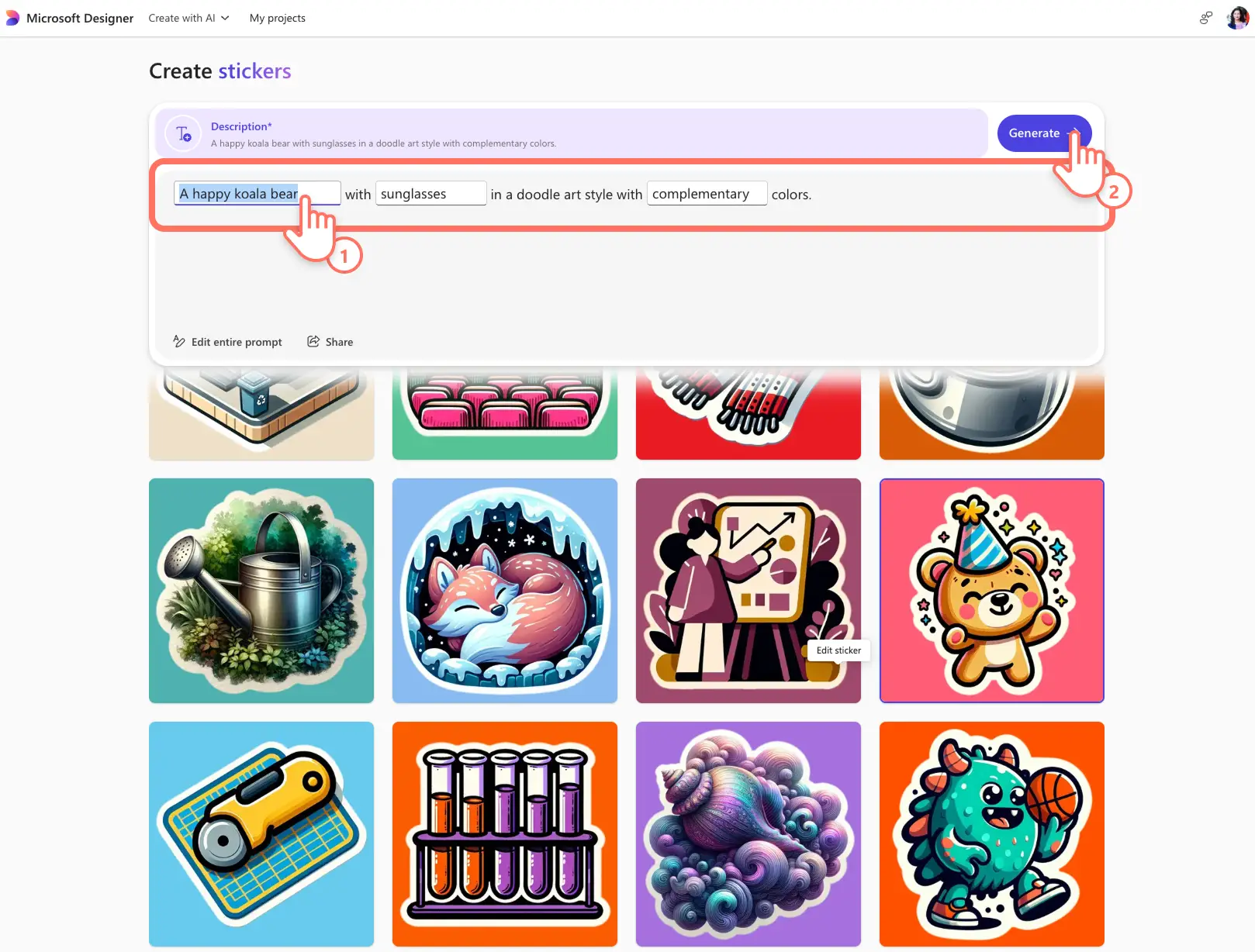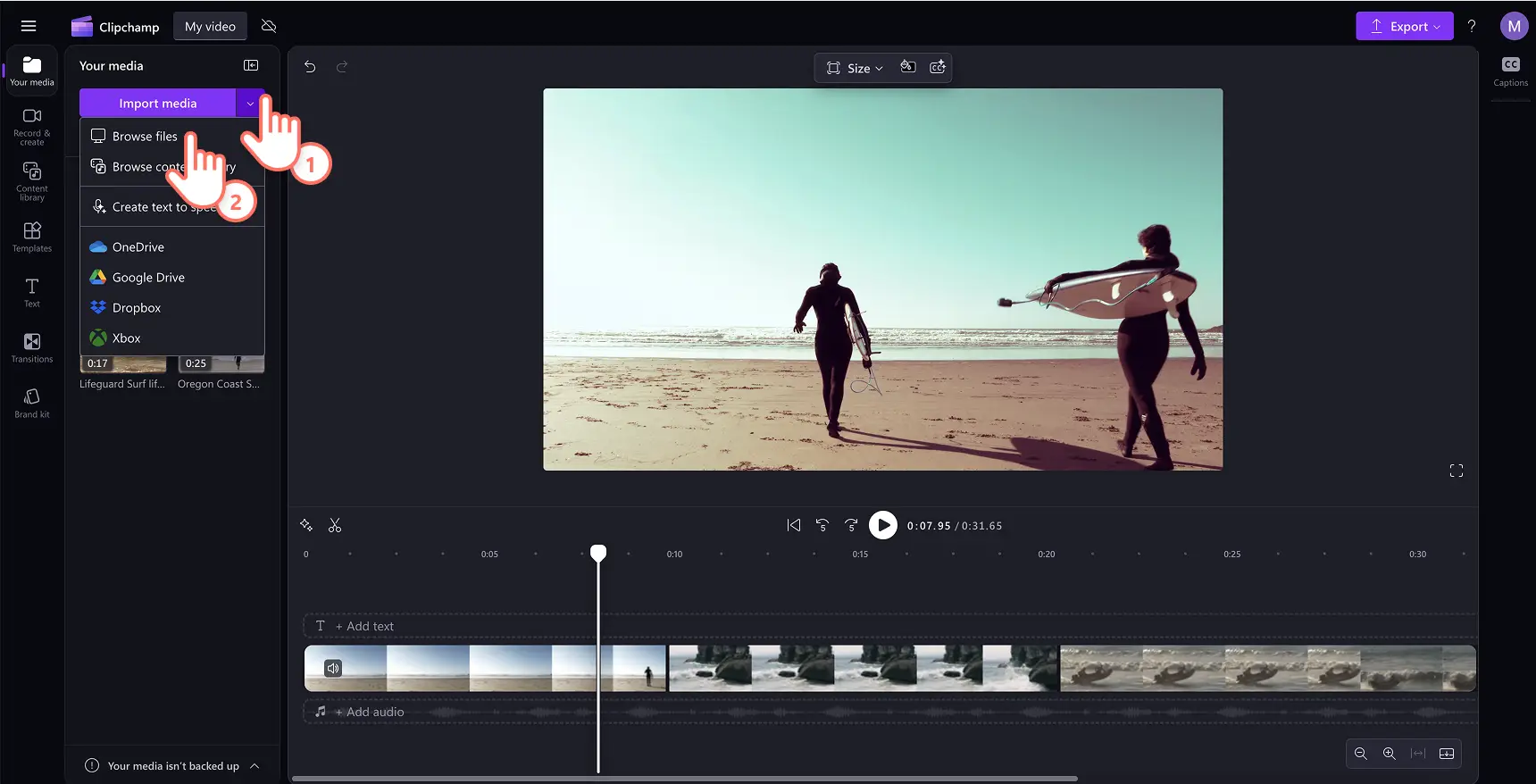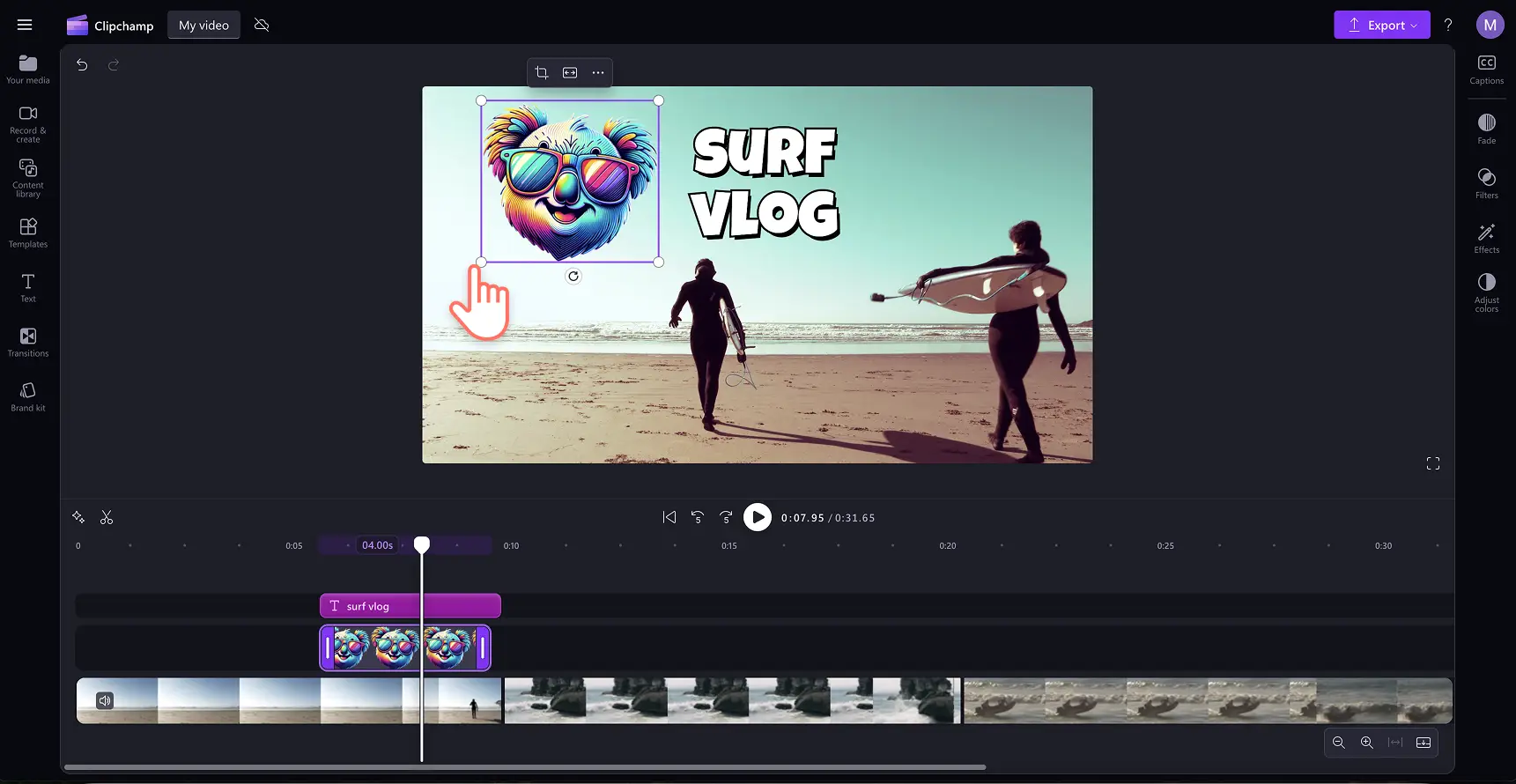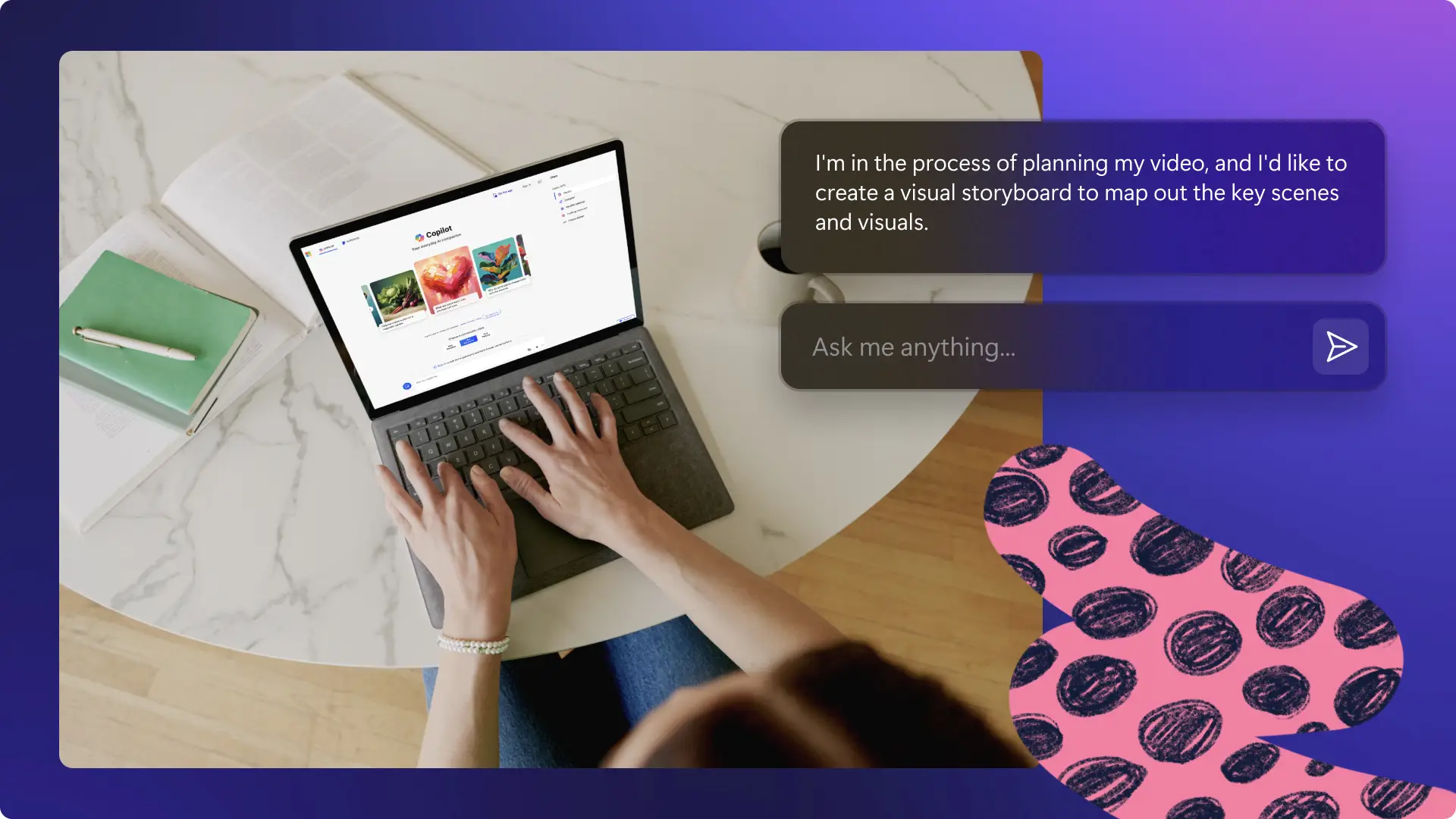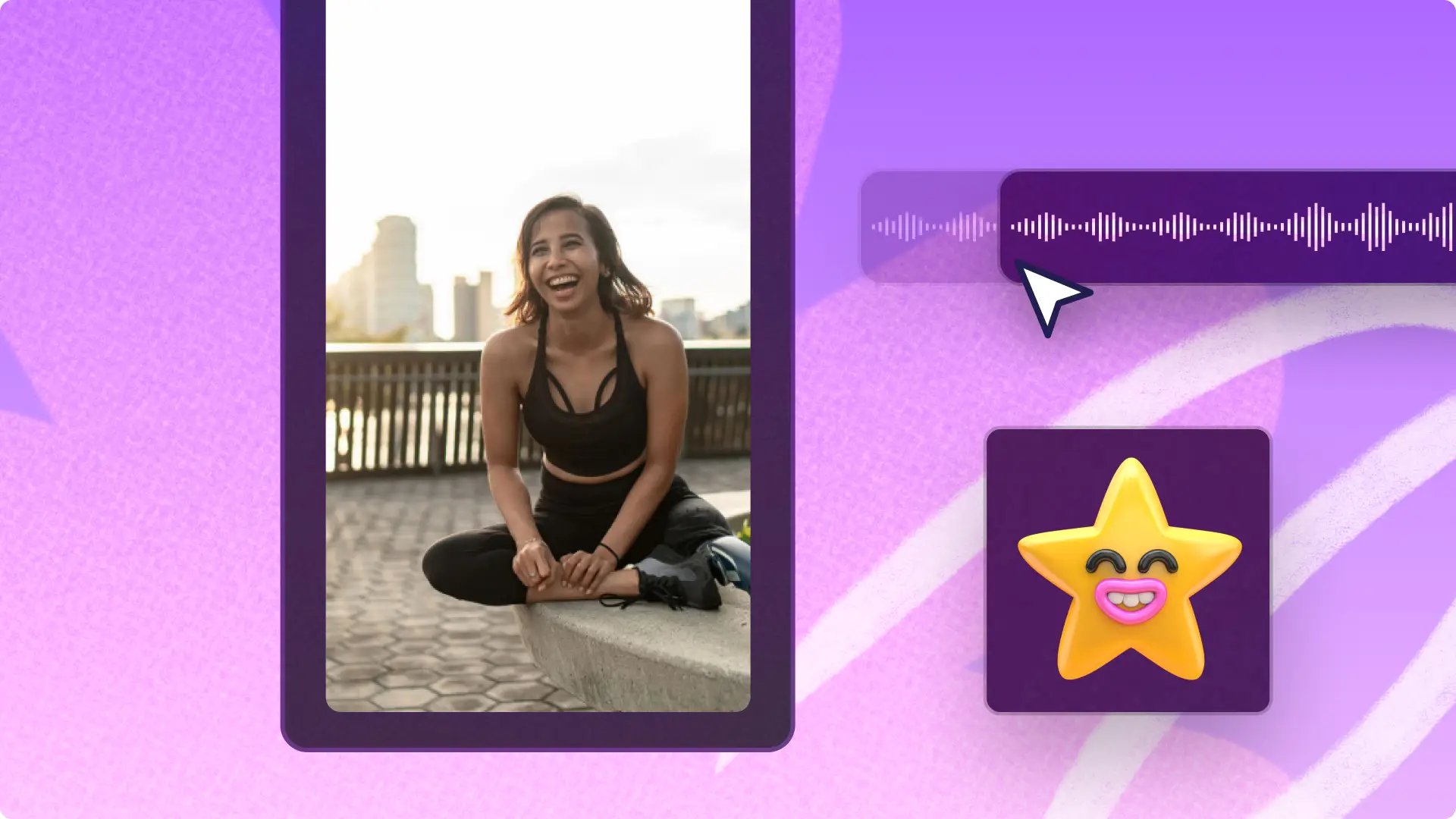Heads up! The screenshots in this article are from Clipchamp for work accounts and the same principles apply to Clipchamp for school accounts. Clipchamp personal account tutorials may differ. Learn more.
On this page
Text to image generation has taken the world by storm—no matter how big your video idea is, it’s only one AI prompt away. With generative AI being so accurate, video makers can stand out with original visuals and replace lengthy searches for the perfect stock video.
Creating videos for social media, presentations, and personal projects can become so much more fun by adding unique AI generated images, stickers, and avatars.
Learn how to use the Microsoft Designer platform and build images that fit your video’s aesthetic and storytelling needs. Here are three fun ways to unlock your creativity by combining Image Creator by Designer and Clipchamp video editor.
How to make a slideshow video with AI Image Creator
Make perfect visuals to suit your video script and generate a video slideshow in a few minutes with AI Image Creator. Whether you choose a vintage aesthetic or a cartoon aesthetic, prompt the AI image generator to build a range of images for your slideshow.
AI generated images will stand out in your Instagram Reels, in video presentations, or even serve as a video pitch in storyboard format. Create your AI image slideshow following these easy steps.
Step 1. Make unique images with the AI image generator
Navigate to the create images tool in Microsoft Designer. Here you can find the AI text to image prompt box, and a variety of generative AI image styles to browse. You can type in your prompt directly to generate your image idea. Alternatively, hover over any image that inspires you and select the edit prompt button to customize the image.
The prompt box will drop down where you can easily replace the text to match your AI image needs. When you’re ready, click the generate button.
Review the AI generated image options to find the image that best fits your video’s aesthetic and storytelling needs. Hover on the image file to preview and download your AI generated image. A PNG file will save to your device automatically.
Continue prompting AI image generator to make a set of images that suit your video script and vision. When you’ve got all your images, sign into Clipchamp to start making a video.
Step 2. Import the AI generated images in Clipchamp
To import your AI generated images saved on your device, click on the import media button in the your media tab on the toolbar to browse your computer files.
Click on the plus button on a video asset in the toolbar or drag and drop it to add it to the video editing timeline. Next, re-arrange your images into a slideshow that flows.
Step 3. Add slideshow effects and save
Enhance your slideshow video with video transitions, text, animated stickers, and complementary music. Start by adding dragging and dropping a scene transition between two clips on the timeline from the transitions tab on the toolbar.
Personalize the AI slideshow video with a text overlay. Click on the text tab on the toolbar and scroll through the title options to find the perfect font style for your video. Preview and add background music by browsing the music category in the content library tab on the toolbar and finish up by adding lively video stickers.
When you’re ready to save your AI slideshow video, click on the export button and select a video resolution that suits your needs.
Want to create an AI slideshow video faster? Try the AI auto compose feature in Clipchamp. Out of time? Simply create a photo slideshow presentation.
How to create AI avatars for faceless videos
Want to start a faceless YouTube channel but don’t want to appear ‘on-air’? Try creating an avatar that can be used in your YouTube video content to represent your voice or AI voiceover. Avatars are good for creating a connection with the audience, in absence of a person’s vibrant personality. Whatever faceless video genre you’re creating in, from history videos to meditation videos, use the AI image prompting tool in Microsoft Designer to create a character that represents your videos.
Step 1. Generate an AI avatar for your video
Navigate to the create avatars tool in Microsoft Designer. Here you can find the AI prompting text box, and a range of avatar styles to inspire you.
Hover over an avatar to see the original text to image AI prompt. If you like the art style, select the edit prompt button in the image preview.
The prompt will appear in an easily editable text box. Update the AI prompt with your avatar idea, then click the generate button.
Hover on the image file to preview and download your AI generated image. A PNG file will save to your device.
Step 2. Overlay the image to your video in Clipchamp
To import your own image avatar saved on your device, click on the import media button in the your media tab on the toolbar to browse your computer files.
Next, drag and drop the AI avatar asset onto the timeline by to add to your video.
Click on the asset on the timeline so it's highlighted, then continue adjusting the placement on the video. You can also increase or decrease the size of the avatar using the freehand tool around the video preview. When you’re ready, save and share your video in high quality.
Learn more ways to overlay and image to create the picture-in-picture effect for your videos. You can also add video effects to your avatar.
How to create AI video stickers
Stickers can add a layer of fun to any video. Video editors use them to convey emotions and excitement in videos.
Clipchamp video editor has a range of copyright-free stickers and animated graphics, including 3D stickers, emojis, and elegant illustrations. Make your own video sticker with Microsoft Image Creator if you can’t find one that suits your video best, or to bring your unique idea to life.
Step 1. Create a custom sticker in Designer
Navigate to the create stickers tool in Microsoft Designer. Here you can find the AI prompting text box, and also a range of sticker styles to inspire you.
Hover over a sticker to see the original AI prompt. If you like the art style, select the edit prompt button in the image preview.
The prompt will appear in an easily editable format. Update the description with your sticker’s requirements, then click the generate button.
Hover on the image file to preview and download your AI generated sticker. A PNG file will save to your device.
Step 2. Import the sticker in Clipchamp
To import your own sticker saved on your device, click on the import media button in the your media tab on the toolbar to browse your computer files. You can also connect your OneDrive if that’s where you saved your image file.
Drag and drop a sticker onto the timeline to add to your video. To edit the size and position of the sticker, click on the asset on the timeline so it's highlighted. Next, move the sticker using the freehand tool around the video preview. Continue editing your video as you need, or create more themed custom stickers in Microsoft Designer.
Now that you’ve mastered AI prompting for images, learn how to prompt AI to create videos, including scripts, keywords, and write voiceover scripts.
Continue learning about the AI video editing tools you can enjoy in Clipchamp to speed up your video editing, or learn how to turn AI images into videos for work.
Start editing videos combining the power of Designer and Clipchamp, or download the Clipchamp Windows app.
